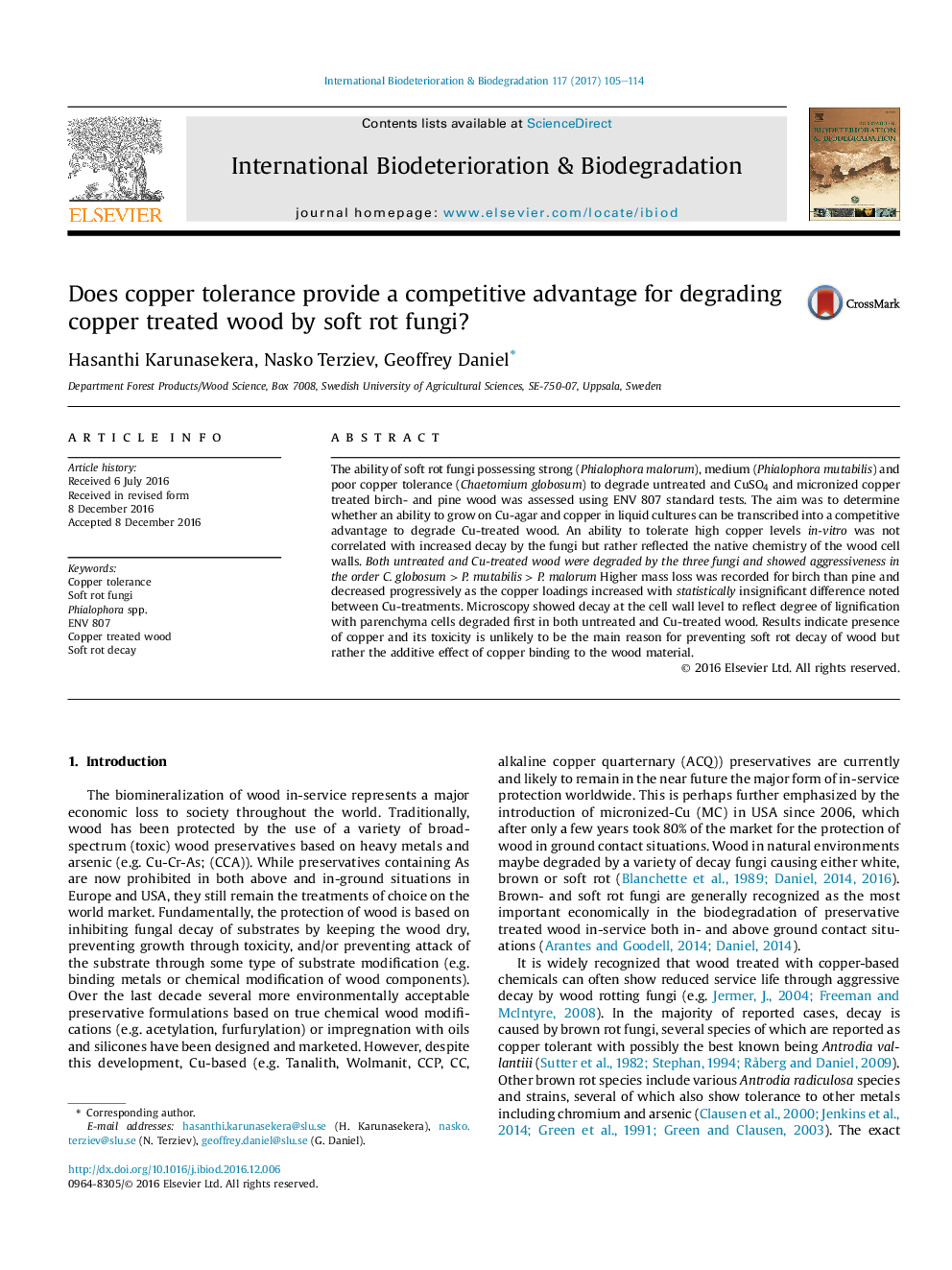| Article ID | Journal | Published Year | Pages | File Type |
|---|---|---|---|---|
| 5740527 | International Biodeterioration & Biodegradation | 2017 | 10 Pages |
Abstract
The ability of soft rot fungi possessing strong (Phialophora malorum), medium (Phialophora mutabilis) and poor copper tolerance (Chaetomium globosum) to degrade untreated and CuSO4 and micronized copper treated birch- and pine wood was assessed using ENV 807 standard tests. The aim was to determine whether an ability to grow on Cu-agar and copper in liquid cultures can be transcribed into a competitive advantage to degrade Cu-treated wood. An ability to tolerate high copper levels in-vitro was not correlated with increased decay by the fungi but rather reflected the native chemistry of the wood cell walls. Both untreated and Cu-treated wood were degraded by the three fungi and showed aggressiveness in the order C. globosum > P. mutabilis > P. malorum Higher mass loss was recorded for birch than pine and decreased progressively as the copper loadings increased with statistically insignificant difference noted between Cu-treatments. Microscopy showed decay at the cell wall level to reflect degree of lignification with parenchyma cells degraded first in both untreated and Cu-treated wood. Results indicate presence of copper and its toxicity is unlikely to be the main reason for preventing soft rot decay of wood but rather the additive effect of copper binding to the wood material.
Related Topics
Life Sciences
Environmental Science
Environmental Science (General)
Authors
Hasanthi Karunasekera, Nasko Terziev, Geoffrey Daniel,
